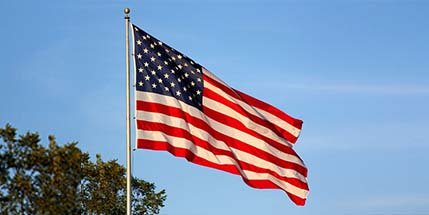
The American flag, often referred to as “Old Glory,” holds a profound significance that extends far beyond its physical appearance. It is a potent symbol of the United States’ values, freedoms, and storied history, especially resonant during the celebrations of July Fourth. Each star and stripe on the flag is imbued with meaning: the stars represent the fifty states, while the stripes pay homage to the original thirteen colonies that declared independence from British rule.
One cannot overlook the flag’s role in unifying the nation. It is flown over federal buildings, schools, and public spaces, serving as a constant reminder of the ideals of liberty and justice upon which the country was founded. Its presence is deeply felt in various ceremonies, whether it’s hoisted high during parades, displayed at sporting events, or draped solemnly over the coffins of fallen soldiers. These acts encapsulate the reverence and respect the flag commands.
Personal experiences often reinforce the flag’s significance. As a young ‘flag monitor’ in elementary school, I was tasked with the responsibility of raising and lowering the flag each day. This duty was not taken lightly; it was an honor that instilled a sense of pride and responsibility. The flag demanded careful handling, reflecting the respect it deserved and symbolizing the unity and pride of our nation.
Internationally, the American flag projects the country’s values and ideals. It is a beacon of hope and freedom, often seen in global contexts where American influence and support are present. From diplomatic missions to humanitarian efforts, the flag stands as a testament to the nation’s commitment to these values.
In essence, the American flag is much more than a piece of fabric; it is a powerful emblem of national identity, unity, and pride. Its symbolism is woven into the very fabric of American life, making it an enduring icon of the nation’s values and aspirations, especially poignant during the celebrations of Independence Day.
The Misuse of the Flag for Political Statements
Recent incidents have demonstrated a troubling trend in the misuse of the American flag for political statements, undermining its status as a symbol of unity and democracy. One notable example is the events of January 6, 2021, where individuals stormed the Capitol building, many of them brandishing the American flag. This act not only disrespected the flag but also distorted its representation of freedom and justice. Furthermore, the involvement of high-profile figures, like Justice Samuel Alito, in politically charged contexts while the flag is prominently displayed, adds to the growing concern.
The American flag is more than just a piece of fabric; it embodies the principles of liberty, equality, and unity that define the nation. When public servants and citizens alike use the flag to further divisive political agendas, they erode these foundational values. Public servants, in particular, have a heightened responsibility to uphold the dignity of the flag. Their actions set a precedent for the broader public, and when they engage in such misuse, it sends a troubling message about the respect due to national symbols.
The responsibility of every citizen is to treat the flag with the pride and respect it deserves. Using it as a tool for political expression not only disrespects the flag but also diminishes the shared values it represents. The flag should serve as a reminder of the collective identity and democratic principles that bind the nation together, not as a divisive instrument in political conflicts.
In light of these issues, it is imperative to return to treating the American flag with the reverence it deserves. By safeguarding the flag from misuse, we can ensure that it continues to stand as a beacon of unity and democratic ideals. The flag should remain a unifying symbol, respected by all, irrespective of political affiliations or agendas.

















+ There are no comments
Add yours